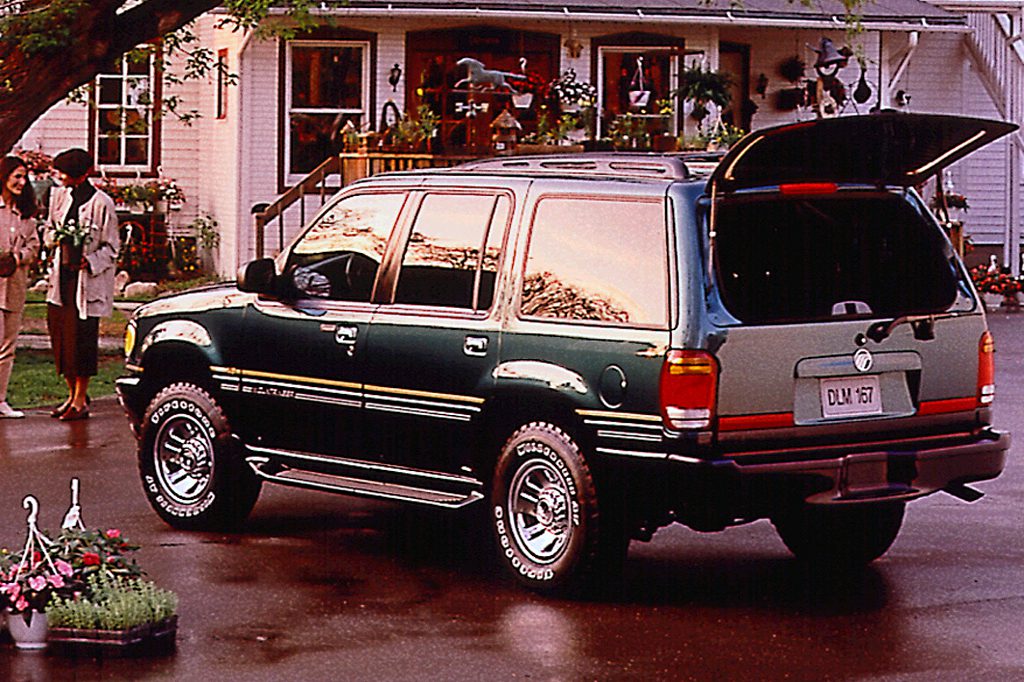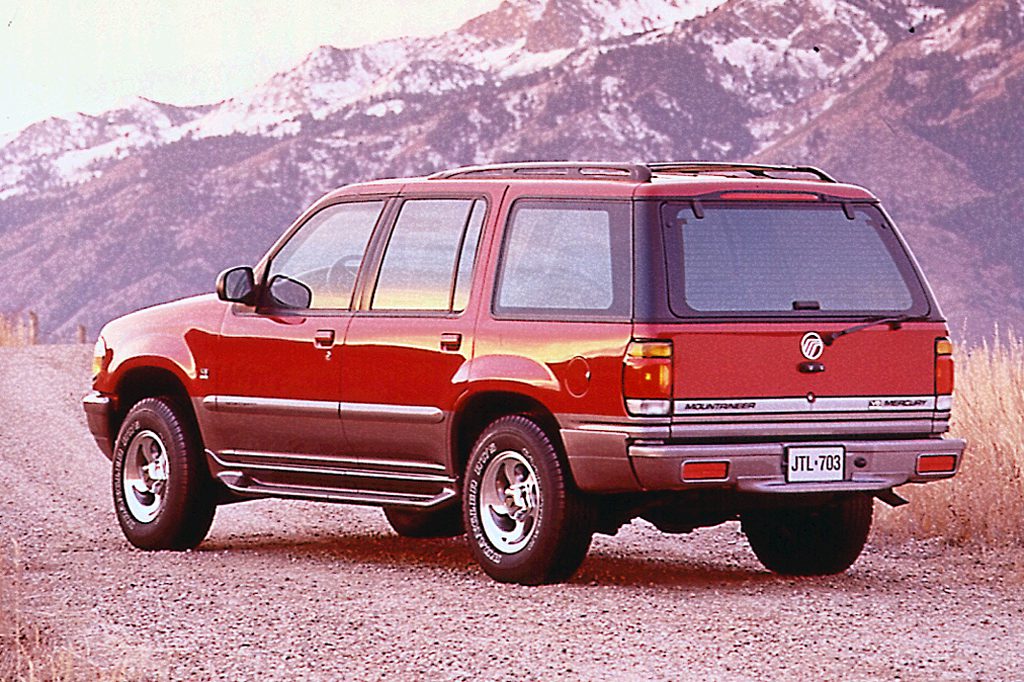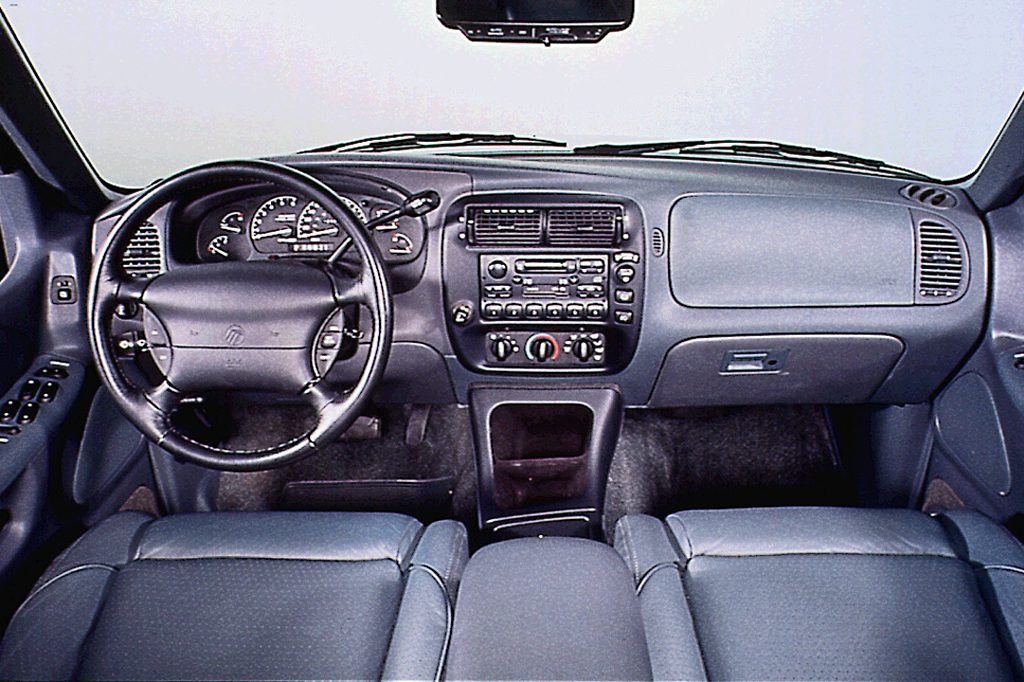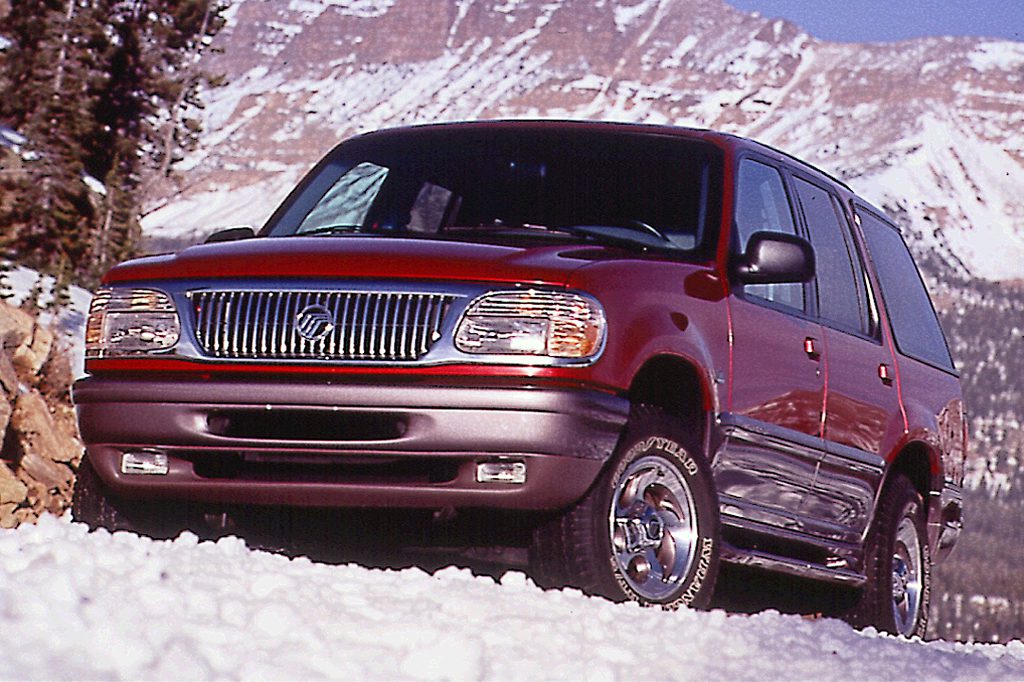| Midsize SUV; Built in USA |
|
|
| Good condition price range: $1,600 – $4,000* |

1998 Mercury Mountaineer

1998 Mercury Mountaineer

1997 Mercury Mountaineer

1997 Mercury Mountaineer interior

1997 Mercury Mountaineer
| Pros: |
|
| Cons: |
|
We rate both the popular Explorer and its Mercury mate highly in the SUV league. Though engine choices aren’t identical, the two models provide similar performance and accommodations, with sound ergonomics in a roomy cabin.
Overview
Essentially, the Mountaineer was a near-duplicate of the latest Ford Explorer. However, Mountaineer was produced only as a 4-door wagon. Buyers got a choice of rear-wheel drive or permanently engaged all-wheel drive. Dual airbags and antilock brakes were standard. Sole engine was a 5.0-liter V8. A 4-speed automatic was the only transmission. The all-wheel-drive system was always engaged and required no input from the driver.
Yearly Updates
| 1998 Mountaineer An overhead-cam V6 engine with 5-speed automatic transmission became standard this year, making the V8 (with 4-speed automatic and permanent 4WD) an option. The 4-wheel-drive system for the V6 was Ford’s Control Trac, which offered 2WD as well as three 4WD modes, one of which can be left engaged on dry pavement. Styling refinements included a fresh grille and newly standard 2-tone paint. |
| 1999 Mountaineer New options became available for the ’99 Mountaineer, including seat-mounted front airbags, a rear load-leveling suspension, and a backing-up warning system. The standard V6 engine gained 5 horsepower. |
| 2000 Mountaineer New luxury option groups became available, called Monterey and (for V8 models only) Premiere. Both included woodgrain interior trim and color-keyed bodyside moldings, running boards, and bumpers. Premiere added steering-wheel audio controls, a color-keyed grille, special spruce-green paint, and 16-inch tires on 5-spoke alloy wheels. |
| 2001 Mountaineer Rear child-seat tether anchors were the only addition for 2001. |
